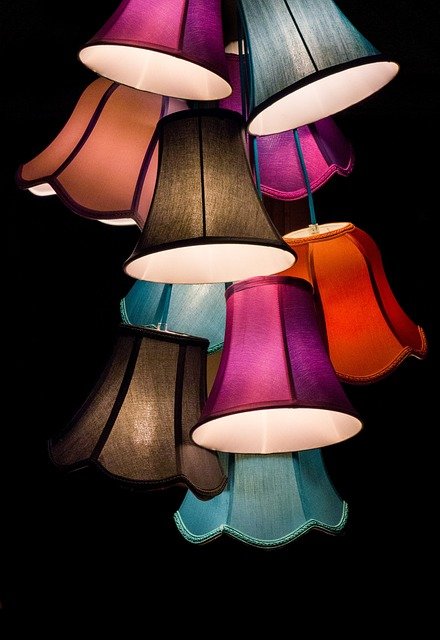Mastering Home Illumination: The Ultimate Lamp Guide
Discover the transformative power of lamps in your living spaces. From enhancing ambiance to boosting productivity, explore diverse lamp types, cutting-edge LED technology, and expert tips for selecting the perfect lighting solution. Uncover the secrets to creating a well-lit, energy-efficient environment that reflects your unique style and meets your functional needs.

Illuminating your living spaces effectively goes beyond mere functionality; it’s an art that can dramatically transform the ambiance and utility of any room. In this comprehensive guide, we’ll delve into the world of lamps, exploring their various types, the advantages of modern lighting technologies, and how to choose the perfect lamp for your needs.
Diverse Lamp Types for Every Space
-
Table Lamps: These versatile fixtures are perfect for adding a cozy glow to living rooms, bedrooms, or home offices. Their portable nature allows for easy rearrangement to suit changing needs.
-
Floor Lamps: Standing tall and proud, floor lamps serve as both functional light sources and striking decor elements. They’re ideal for illuminating larger areas or creating focused reading nooks in living spaces.
-
Desk Lamps: Engineered for optimal task lighting, desk lamps often feature adjustable components to direct light precisely where it’s needed, reducing eye strain during work or study sessions.
-
Wall-Mounted Lamps: Also known as sconces, these space-saving fixtures can provide ambient or accent lighting, adding depth and character to hallways, bedrooms, or living areas.
-
Pendant Lamps: Suspended from the ceiling, these eye-catching fixtures are popular choices for kitchens, dining rooms, and entryways, offering both style and illumination.
Each lamp type brings its unique charm and functionality, allowing you to craft the perfect lighting scheme for your home or office.
The LED Revolution: A Brighter, Greener Future
LED technology has transformed the lighting industry, offering numerous benefits over traditional lighting options:
-
Energy Efficiency: LED bulbs consume significantly less power, translating to lower electricity bills and reduced environmental impact.
-
Longevity: With a lifespan up to 25 times longer than incandescent bulbs, LEDs require less frequent replacement, saving time and resources.
-
Durability: LEDs are resilient against shocks and vibrations, making them suitable for various environments.
-
Color Versatility: Available in a wide spectrum of color temperatures, LEDs allow for customized lighting experiences to suit any mood or activity.
-
Instant Illumination: Unlike some fluorescent options, LED lights reach full brightness immediately upon activation.
While the initial cost of LED bulbs may be higher, their long-term benefits in energy savings and reduced maintenance make them an increasingly popular and cost-effective choice for both residential and commercial applications.
Selecting the Ideal Lamp: Key Considerations
Choosing the right lamp involves more than aesthetics. Consider these factors to ensure your selection meets both your functional and stylistic needs:
-
Intended Use: Determine whether you need task lighting for specific activities, ambient lighting for general illumination, or accent lighting to highlight particular features.
-
Size and Proportion: Ensure the lamp’s dimensions complement your existing furniture and room size for a balanced look.
-
Design Compatibility: Select a lamp that harmonizes with your current decor style, whether it’s contemporary, traditional, industrial, or eclectic.
-
Brightness Level: Check the lamp’s lumen rating to confirm it provides adequate illumination for your intended purpose.
-
Light Temperature: Choose between warm and cool tones based on the desired atmosphere and function of the space.
-
Adjustability Features: Consider lamps with dimming capabilities or flexible components for greater versatility in light control.
-
Energy Efficiency: Opt for lamps compatible with energy-saving bulbs to minimize long-term operating costs and environmental impact.
By carefully weighing these factors, you can select a lamp that not only enhances your space visually but also fulfills your practical lighting requirements.
Harnessing the Power of Proper Lighting
Well-planned lighting can significantly enhance both the aesthetics and functionality of any environment:
-
Mood Enhancement: Soft, warm lighting creates a cozy atmosphere, while brighter, cooler light energizes spaces.
-
Productivity Boost: Proper task lighting reduces eye strain and improves focus, potentially increasing work efficiency.
-
Visual Interest: Strategically placed lamps can accentuate architectural features or artwork, adding depth to your interiors.
-
Spatial Perception: Effective lighting can make rooms appear more spacious and inviting.
-
Health Benefits: Quality lighting can help regulate circadian rhythms, potentially improving sleep patterns and overall well-being.
-
Adaptability: Adjustable lighting allows you to modify the ambiance to suit various activities or times of day.
By thoughtfully incorporating a mix of lighting types and fixtures, you can create a more comfortable, functional, and visually appealing living or working environment.
Energy-Saving Strategies for Lamp Usage
Maximize the efficiency of your lighting setup with these practical tips:
-
Embrace LED Technology: Switch to energy-efficient LED bulbs for significant power savings.
-
Utilize Dimmer Switches: Adjust brightness levels to create ambiance while reducing energy consumption.
-
Implement Smart Controls: Use timers or smart plugs to automate lamp operation and avoid unnecessary usage.
-
Regular Maintenance: Keep lamps clean to ensure optimal light output and efficiency.
-
Strategic Placement: Position lamps near reflective surfaces to amplify their illumination.
-
Layered Lighting Approach: Combine ambient, task, and accent lighting to create a well-lit space without overreliance on a single high-wattage source.
-
Natural Light Integration: Arrange lamps to complement daylight, reducing the need for artificial lighting during daytime hours.
By implementing these energy-conscious practices, you can enjoy well-lit spaces while minimizing your environmental footprint and reducing electricity costs.
In conclusion, lamps are indispensable elements in creating inviting, functional, and energy-efficient spaces. By understanding the various lamp types available, embracing LED technology, and considering key factors in lamp selection and usage, you can transform your environment to perfectly balance style, comfort, and practicality. Whether you’re redesigning your home or optimizing your workplace, the right lighting choices can significantly enhance your daily living and working experience.






